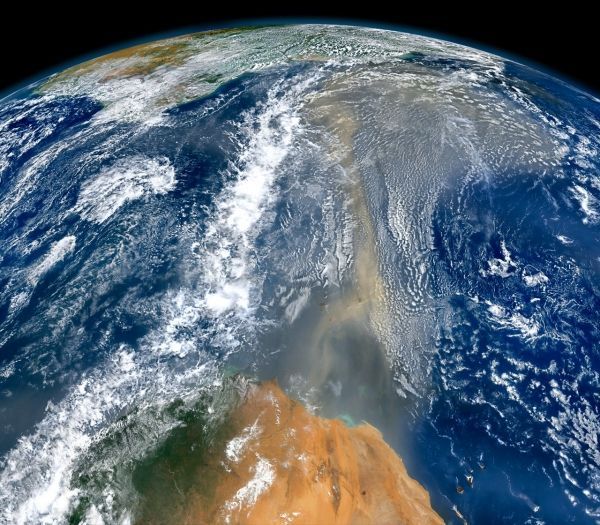Buoyed by an atmospheric “superhighway,” smoke from lightning-sparked African savanna and forest fires deposit unexpectedly large amounts of nutrient-rich phosphorus in a river basin an ocean away.
“It’s so counterintuitive that the air would deposit this amount of nutrition for the land,” said Natalie Mahowald, the Irving Porter Church Professor of Engineering in the Department of Earth and Atmospheric Sciences, discussing new research in the Proceedings of the National Academy of Sciences, July 24.
Douglas Hamilton, a Cornell postdoctoral researcher, joined Mahowald on preparing analytical models for the work, “African Biomass Burning Is a Substantial Source of Phosphorus Deposition to the Amazon, Tropical Atlantic Ocean and Southern Ocean.” Doctoral student Anne E. Barkley, and professors Joseph M. Prospero and Cassandra J. Gaston – all from the University of Miami – led the research.
Read more at Cornell University
Image: Dust from Africa, in the lower part of the photo, travels in the tropical, easterly Saharan air layer and crosses the Atlantic Ocean. It is deposited in the Amazon River basin, in the upper part of the photo. CREDIT: NASA


